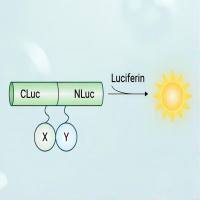Noninvasive Imaging of Molecular Events with Bioluminescent Reporter Genes in Living Subjects
互联网
互联网
相关产品推荐

GLU-1D-1D/GLU-1D-1D蛋白/GLU-D1-1B蛋白/Recombinant Triticum aestivum Glutenin, high molecular weight subunit DX5 (GLU-1D-1D), partial重组蛋白
¥69

Nanog-GFP报告基因质粒(Nanog GFP Reporter Plasmid)
¥3365

Recombinant-Xenopus-tropicalis-Transmembrane-protein-173tmem173Transmembrane protein 173 Alternative name(s): Stimulator of interferon genes protein; STING
¥11704

噻唑蓝四唑蓝,298-93-1,Membrane-permeable yellow dye that is reduced by mitochondrial reductases in living cells to form the dark blue product, MTT-formazan.,阿拉丁
¥895.90

荧火素酶互补实验(Luciferase Complementation Assay, LCA)| 荧光素酶互补成像技术(Luciferase Complementation Imaging, LCI)
¥5999
相关问答

